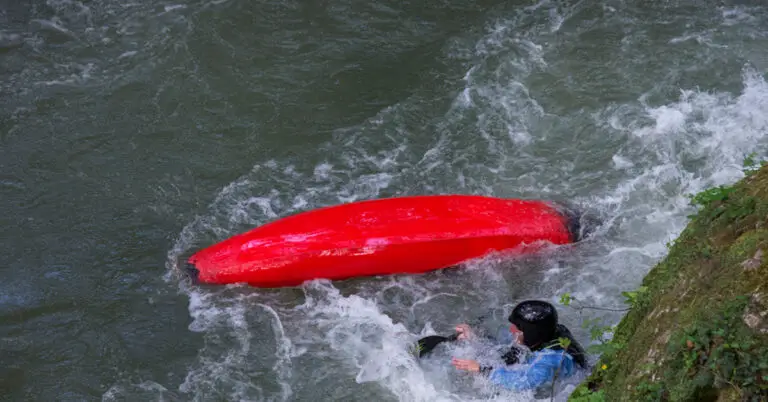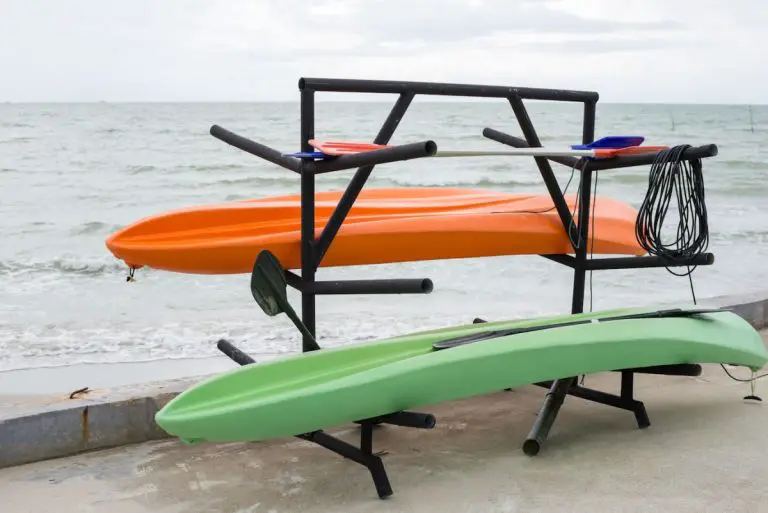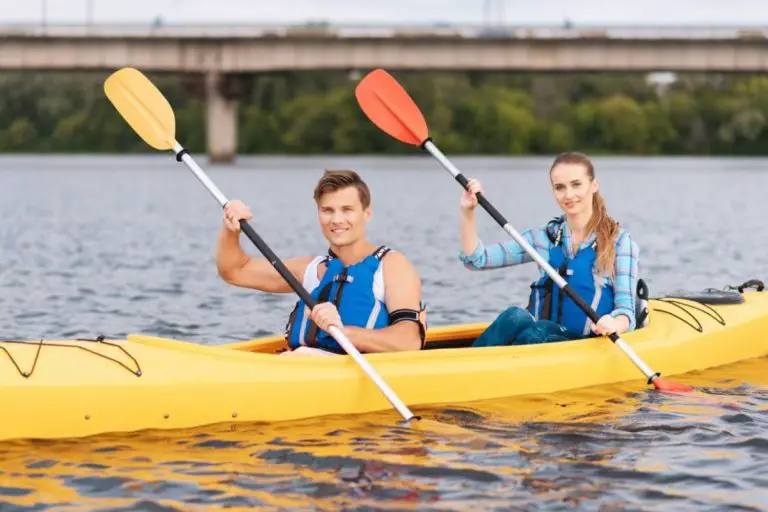7 Reasons Why Your Kayak Feels Tippy & What to Do About It
Kayaking is a lot of fun, but it can be hard to master, especially if you always feel like your kayak is about to tip over. It is much easier to paddle when you feel stable and are not worried about tipping. If you’re dealing with this problem, you might be wondering why your kayak feels tippy.
Here are 7 reasons your kayak feels tippy:
- Inexperience
- Leaning Passenger(s)
- High Center of Gravity
- Using a Sit-on-Top vs. Sit-Inside Kayak
- Rough Water Conditions or Weather
- Bracing Incorrectly
- Exceeding the Weight Limit
This article explains the reasons why your kayak feels tippy and how you can avoid them. Read on for information that will help you have a fun and stable kayak experience.
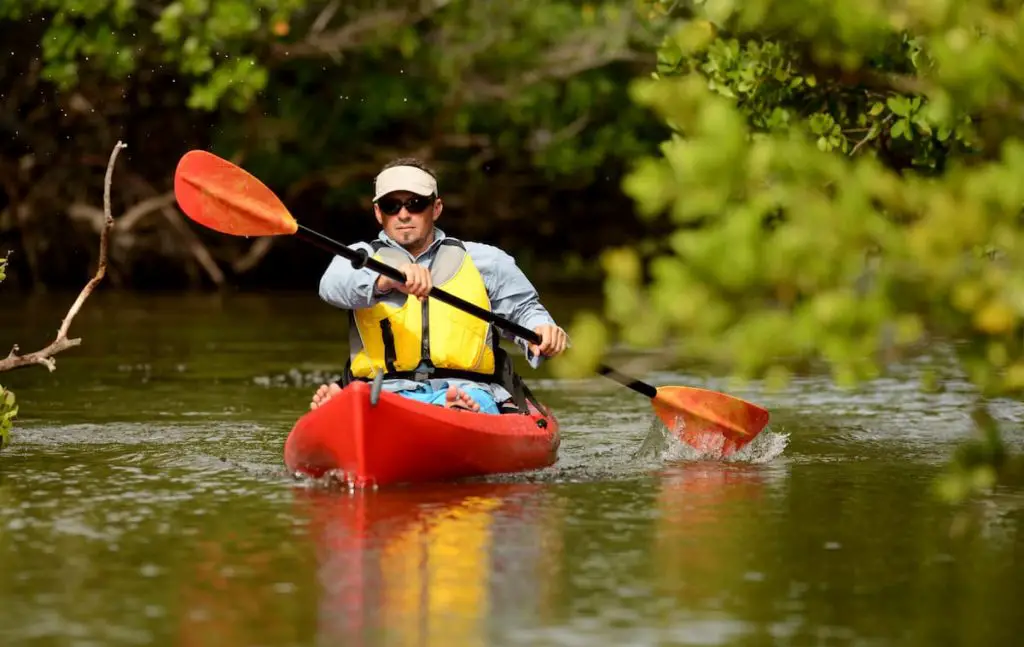
1. Inexperience Can Cause a Kayak To Feel Unstable
The first reason why your kayak might feel tippy is that you are new to kayaking. It can take a little bit of time to get used to sitting still in a kayak without feeling a little shaky. There are a few ways to practice balancing and feel less tippy in a kayak.
Practice in Calm Waters
First, you should always start in calm and still water. You do not want your first kayaking experience to be in choppy water. It is hard enough to balance as a beginner in a kayak, and choppy water will only make it harder for you.
You want to start slow and in water which makes it easy for you. It will become easier as time goes on to sit in choppy water and maintain your balance. This is a huge factor in reducing the tippy feeling while kayaking.
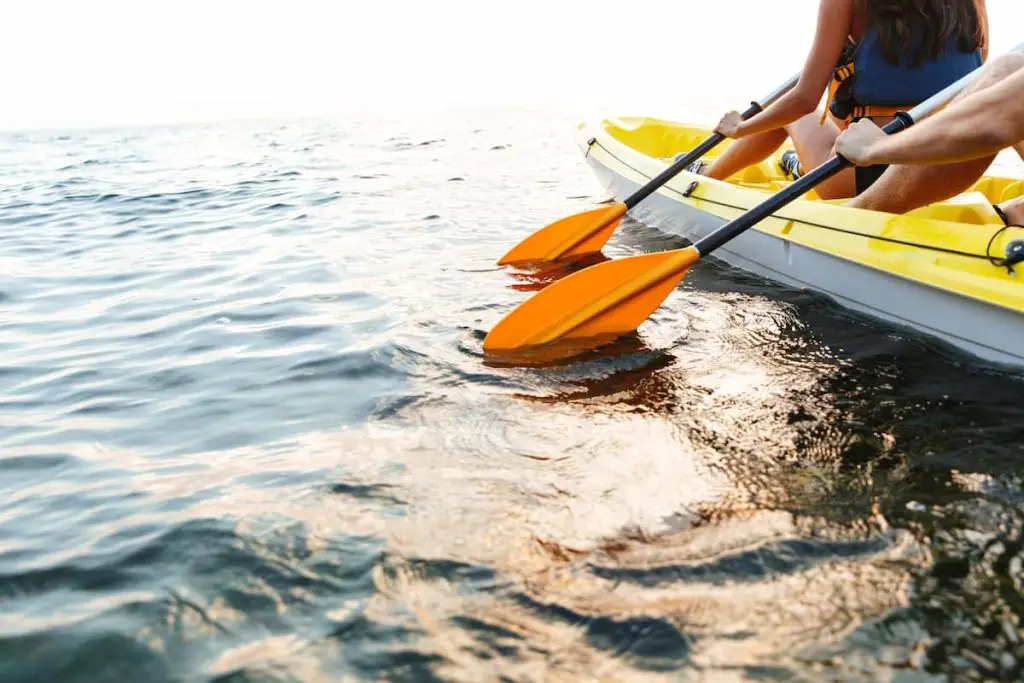
Start Out With a Beginner’s Kayak
As a new kayaker, you should also choose a kayak that is made for beginners. As we will discuss throughout the article, there are a few different types of kayaks, and the position of your body and center of gravity in the kayak Can make it hard for you to stay stable and not tip over in your kayak.
Once you get better at kayaking and feel more stable in the water, you can try other kayaks. Still, when you first start, you should start slowly with an easy kayak and smooth water conditions so you can learn how to stay stable without getting frustrated.
2. Leaning Passenger(s) Can Make a Kayak Feel Tippy
The direction you lean when kayaking is also important if you want to avoid feeling tippy. In general, you do not want to lean in any direction when you are kayaking. You should stay straight up and keep your body centered. Try to keep your torso perpendicular to the water and the kayak.
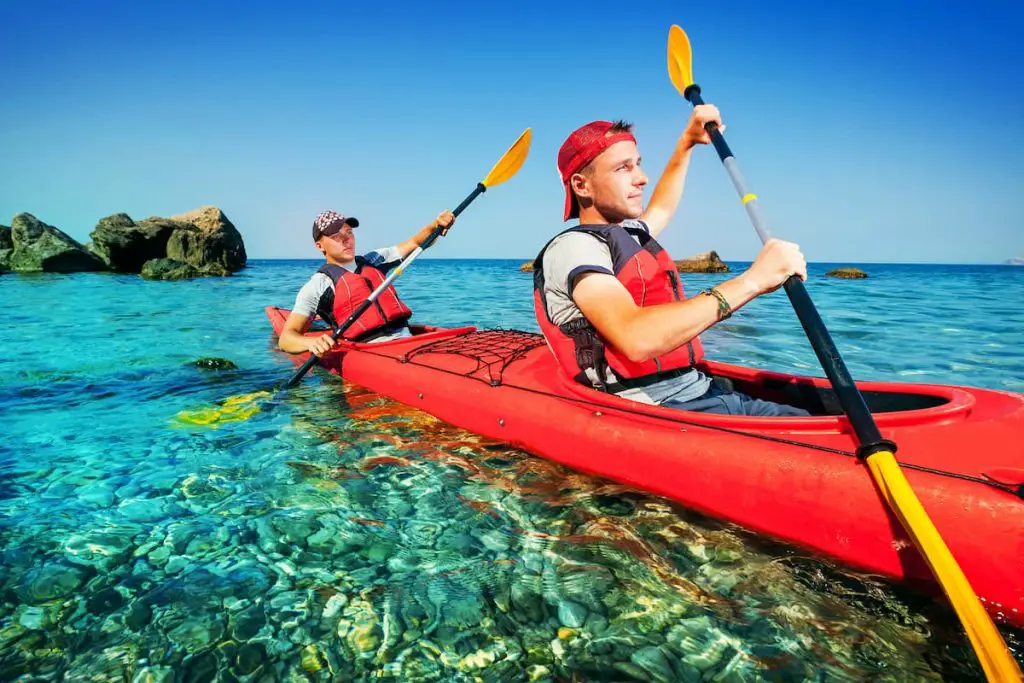
Only Lean To Aid in Navigation
Still, there are some times that you should lean if you want to prevent tipping or feeling unstable. For example, if you are not kayaking on clear water and there are many rocks or other objects below you, you can lean to counteract these forces.
You should lean downstream if you do not want to feel tippy. Leaning your body will help the kayak to keep moving past the objects and prevent you from tipping over.
If you keep your body still and do not lean in these situations, you will get stuck up against the obstacles. If the force of the water pushing you up against these objects is strong enough, you will feel even more unstable, or even tip over completely.
Unintentional Leaning Can Cause Tipping
Your kayak may also feel tippy if you unintentionally lean to one side. Sometimes our balance is not as good as we may think it is, and if you are leaning to one side without realizing it, you will start to feel tippy in that direction.
If you notice this unconscious leaning happening, you should practice sitting in still water in your kayak. Do this until you can balance out your body and stop leaning unintentionally.
3. High Center of Gravity Reduces Stability
Your center of gravity is very important when you are kayaking. If you cannot keep your center of gravity in the right place, you will feel tippy.
A Low Center of Gravity Prevents Tipping
Your center of gravity when you are kayaking is either low or high. A low center of gravity means that your body weight (especially in the center of your body) is close to the water. With a low center of gravity, it is easier to balance your kayak, and there is a lower chance that you will feel tippy.
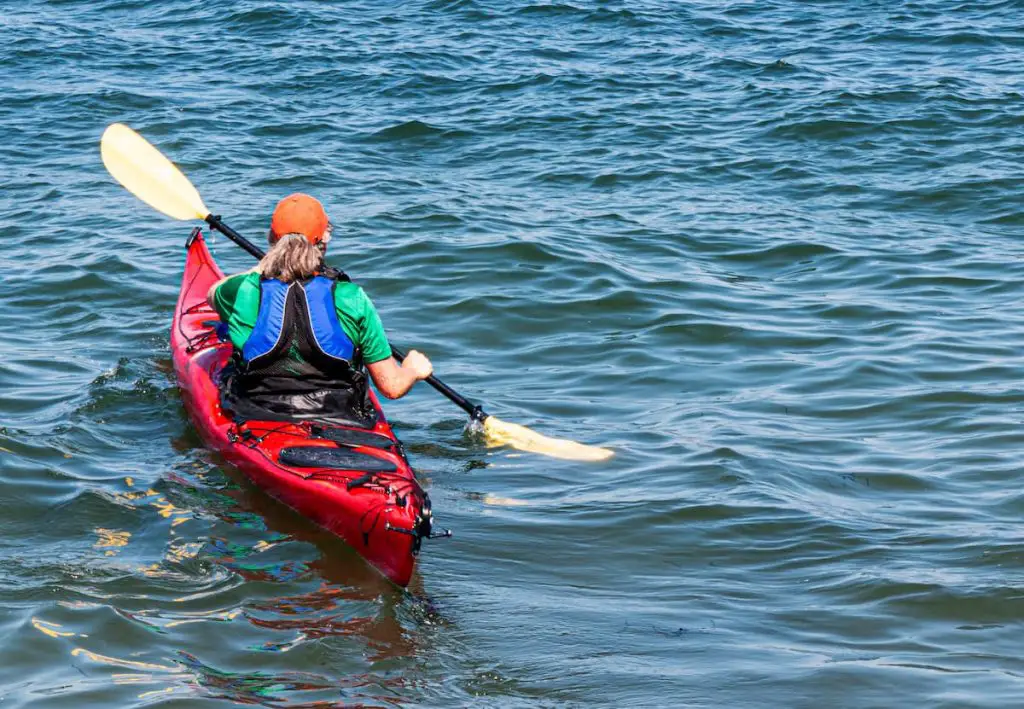
A High Center of Gravity Hinders Stability
On the other hand, you might have a high center of gravity when kayaking. A high center of gravity means you are sitting higher above the water. This may be because you have a high seat, or because your kayak does not have as big of a dip.
The higher your center of gravity, the harder it will be to keep your kayak stable, especially if you are kayaking quickly or on rough water. If you feel tippy in your kayak, you should make sure that your center of gravity is not too high. If it is, you should consider lowering your seat or finding a kayak that seats you lower into the water.
Kneel To Increase Kayak Stability
You can also kneel over your seat to alter your center of gravity. Then, you can lean back against the seat if you want to be more comfortable. The wider the kneeling stance, the more stable you will be in your kayak, and the less likely you are to feel tippy.
If you are worried about kneeling feeling uncomfortable, you can get knee pads or a wetsuit with built-in knee pads. You might also consider placing some padding on the bottom of your kayak where your knees will rest.
4. Using a Sit-on-Top vs. Sit-Inside Kayak Affects Stability
You can choose between two types of kayaks: a sit-on-top kayak and a sit-inside kayak. Sit-inside kayaks have holes in them that contain your lower torso and legs while you are on the water. The sit-on-top kayaks do not have holes in them. As the name suggests, you are meant to simply sit on top of them.
Sit-Inside Kayaks Provide Stability
As discussed in the section above, your center of gravity affects how stable you will feel when riding in a kayak. With a sit-inside kayak, your center of gravity is lower. In these kayaks, you are more stable and less likely to feel like you’re tipping over.
Even though sit-inside kayaks tend to have a lower center of gravity, sometimes you can adjust their seats. If you are feeling tippy in this type of kayak, you can try lowering the seat to get your center of gravity down.
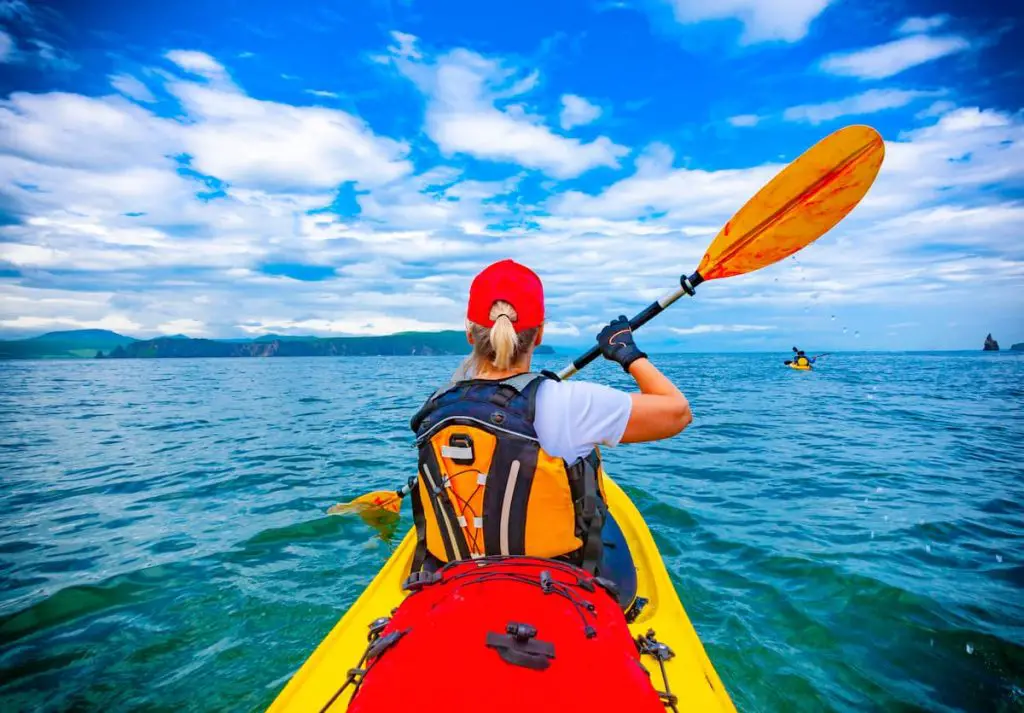
Sit-on-Top Kayaks Raise Your Center of Gravity
On the other hand, there is no hole that dips into the water in a sit-on-top kayak. The kayak is just a flat surface that floats on top of the water, so your center of gravity is much higher in these kayaks.
There are ways to make a sit-on-top kayak less tippy, but they usually require that you sacrifice other helpful features of the kayak. For example, the wider the kayak is, the less tippy it will feel because there is more surface on the water beneath it. However, wider kayaks also move slower and can be challenging to paddle due to there being more friction between the kayak and the water.
Remember that with a sit-on-top kayak, you will not be able to adjust your seat to be as low as a sit-inside kayak, so your center of gravity will always have to be higher in these kayaks.
5. Rough Water Conditions or Weather Cause Kayak Instability
The weather and the water conditions can play a big factor in whether or not your kayak feels tippy. You should always double-check the weather before you go kayaking. Even if you expect great weather, there’s always a chance that it could change unexpectedly.
Rain and Fog Reduce Visibility When Kayaking
The worst kinds of weather to kayak in include rain, fog, and wind. Fog makes it difficult to see where you are going and what is up ahead of you. You want to have good visibility when you kayak so you can see any rocks or other hazardous items coming up.
If you do not realize that you are kayaking in unclear water, your kayak might start to feel tippy when you hit rocks or other objects below the waterline without realizing it.
You also do not want to kayak in the rain. This is not only for safety reasons but also because as the rain hits the water, it will start to rock your kayak and make things feel less stable.
Strong Winds Can Tip Your Kayak
Strong winds are also difficult to kayak in since they will move you, especially if you are sitting high up above your kayak and have more of your body exposed to the wind. The wind will make your kayak feel tippy, especially if it blows strongly in one direction. You will feel the tip towards one side constantly.
Rough Waters Make Kayaks Feel Tippy
Weather is not the only thing that can make the water choppy. Sometimes the water you are kayaking in is just not calm (or not as calm as you expected it to be), which might make you feel tippy.
Water also gets quite choppy if there are a lot of other boats in the water that you are kayaking in. This will also impact the stability of your kayak.
6. Bracing Incorrectly Creates a Tipping Feeling in a Kayak
Bracing is a great technique to use when you are kayaking, and you think you might tip over. You can use two types of braces: low brace and high brace. If you do not know how to properly brace, or use the incorrect type of brace, you will start to feel yourself tipping in your kayak.
Low Bracing Corrects Subtle Tipping
The first type of bracing is low bracing. When you use a low brace, your paddle is at waist level. This technique can help you feel more stable when you feel slightly tippy. A low brace is a small, but quick movement that will help you get your body back straight and perpendicular to the kayak if you start to tip slightly in one direction.
You should use the low brace when you start to feel your kayak tipping a little bit, but do not feel like you’re about to tip over completely.
If you want to learn the low brace technique, check out this instructive Youtube video from Paddling.com:
High Bracing Adjusts Your Kayak With Power
The other type of bracing is the high brace. With a high brace, your paddle is at shoulder level. This technique gives you a more powerful movement than the low brace. While a high brace can also help you re-stabilize if your kayak is feeling tippy, it will adjust you much more than the low brace because it has more power.
The bad thing about the high brace being so powerful is that you can easily over-adjust. For example, if you are leaning to the right and using a high brace, it could help you get straight up again. However, the brace could also move you so much that you start tipping to the left instead.
Learn how to use the high brace to keep your kayak from being tippy in this youtube video from Paddling.com:
You should practice both of these methods in calm and easy-to-navigate waters. Then, when you start to feel your kayak tipping in rougher waters, you can use the brace that you need without thinking much about how to do it and which one to use.
7. Exceeding the Weight Limit Will Cause a Kayak to Be Tippy
The final way you might feel tippy in your kayak is that you are violating your kayak’s weight limit. Not only should you follow the weight limit for safety reasons, but it can make your kayak feel especially tippy.
Choose a Kayak With a Suitable Weight Limit
When you buy or rent a kayak, make sure that you will not exceed its weight limit. Remember that this includes your body, in addition to any gear or items you are bringing with you on the kayak.
If you are close to the weight limit, you might want to find a bigger kayak. If you already own a kayak, know its weight limit. It’s a good idea to periodically check your weight and the weight of any items you bring kayaking with you to make sure you don’t exceed the limit.
Follow Kayak Weight Limits With Multiple Riders
You also have to be conscious of the weight limit when you are kayaking with multiple people on one kayak. Of course, kayaks made for multiple people have bigger weight limits. They are bigger in general to seat two or more people. Still, you still need to make sure that you and anyone you are kayaking with do not exceed the total weight limit. Otherwise, you will start to feel tippy and unstable as soon as you get in the water.
If you are kayaking with a kid, make sure that they have the proper kayak for their weight. Some older or bigger kids need to use an adult kayak to keep them from feeling tippy while out on the water.


